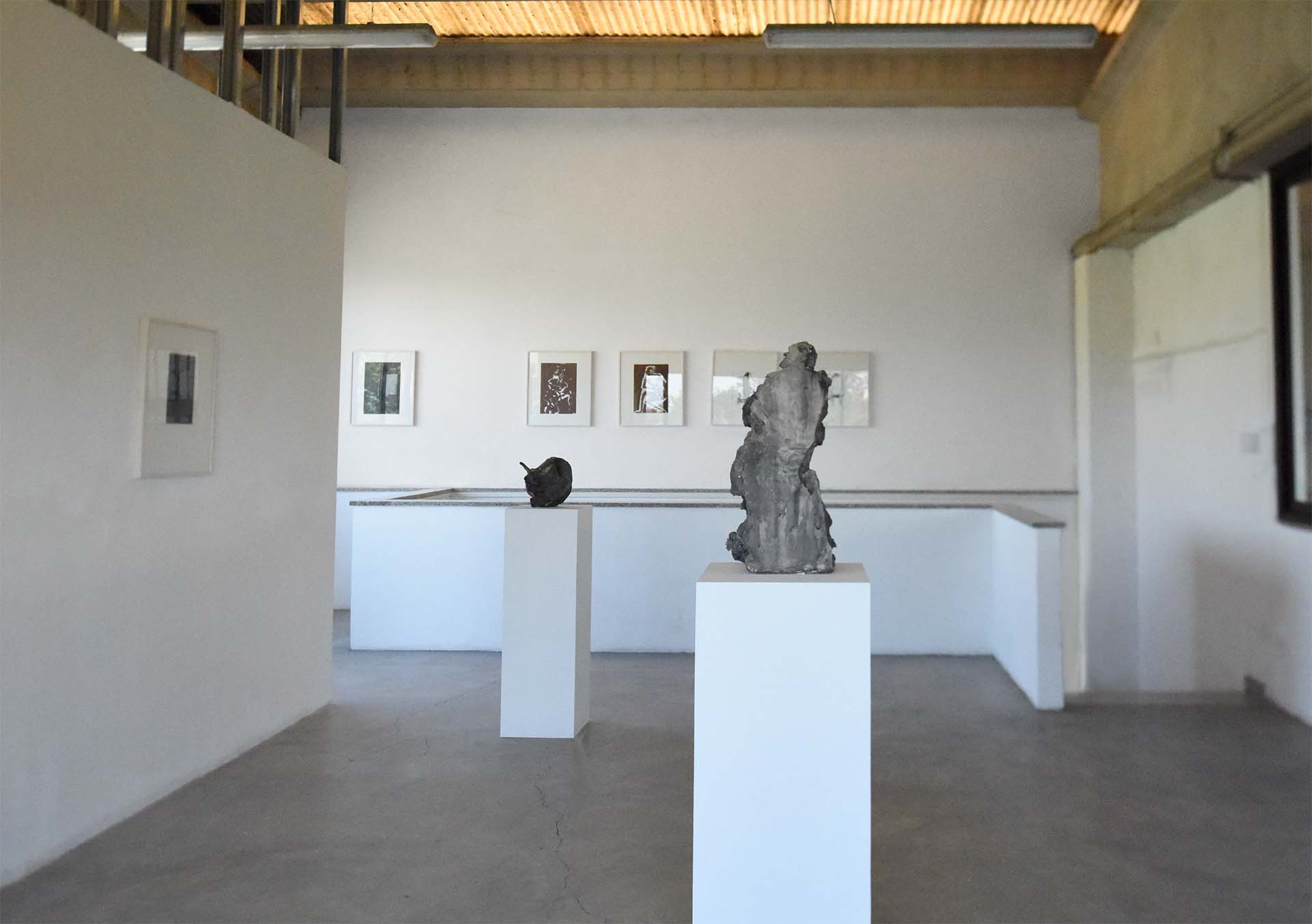Miscellanea
Emanuele Becheri

Text by Miral Rivalta
During my fourth and most recent visit to Emanuele Becheri’s studio, I was struck by the volume of work occupying the space. It felt as if the arm-wrestling match between him and the studio—his need for free surfaces and his need to create, man versus modeling—had ended, with the work emerging victorious. The pieces have taken over. A routine I had developed in Emanuele’s studio was hunting for the “punished” sculptures. Works that, once completed, he was not entirely convinced of, condemned to the most hidden corners of the studio. Sometimes, during this search, I would find new figures, often the same ones as always, some here and there awaiting a final and often fatal judgment. Not today. The work has spread to such an extent that it has erased every boundary line between wanted, curated, displayed works and those rejected, punished, hidden.
This new, at least to me, invasion of works also changes the way one visits the studio; every movement by the visitor can be tragically disastrous. And in paying extreme attention to every move, every step, the body takes on a new weight; similar to what one might feel inside large museums.
We start talking about some works he would like to bring to Volvera for the Fuocherello exhibition. We select pieces from the shelves and carefully place them on long shelves to observe them better and discuss intriguing combinations. After viewing a series of figures, we put them back in their place. Emanuele shifts my attention to a frieze resting on the table behind me. It is the largest he has created to date. The modeling, which requires a certain amount of strength and energy, feeds the material and results in undeniable dynamism. The clay comes alive and contorts like living pulp. The same goes for his drawings, made with his hands in oil paint on a panel and then “printed” onto large semi-transparent paper. As with sculpture, they are the remnants of his gesture, a reflection of his hand. Specific intentions, domination of the body, and physical responses of the material, gravity, the oil, the clay.
Emanuele’s figures are elusive; they do not allow full enjoyment. Approaching them, I find it impossible to derive absolute satisfaction by looking at them head-on. This aspect, common in sculpture, is exacerbated in his work. The viewer encountering Emanuele’s works recognizes that they have only a partial impression of his figures; thus, the piece demands absolute and continuous attention. This immediate awareness binds you to his work. Every angle, under natural or artificial light, reveals details and insights about the subjects. I am certain that those who own his work continue to discover new details and nuances even after years.
Often when I look at them, especially the twisted couples, they make me feel a bit like a voyeur. Observing these works becomes, for me, like peeking, searching all around for a point of entry, a way to read and fully understand the form and image, but the work will never fully yield. I find the English phrase fitting, “the door cracked open,” the door open just slightly, just a crack.
Emanuele’s Vases have a different type of movement. These works inhabit the same imagery as the figures. They allow themselves to be looked at, guiding the observer’s gaze and caressing it; their movement, like a breeze, is comforting and familiar to every viewer, especially for those of us who grew up admiring Giorgio Morandi. Generated by the twists Emanuele imposes on the clay, the vases develop into a more complex narrative that is halted just before the figure appears. Additionally, the vase in art history is associated with the image of the womb and everything that alludes to emptiness and fullness.
It is the combination of all these elements, now in his studio, that makes the encounter with Emanuele’s work surprising, especially when he is left free to inhabit the space of his presences, his works, with full supremacy, allowing us to peek through a crack.






